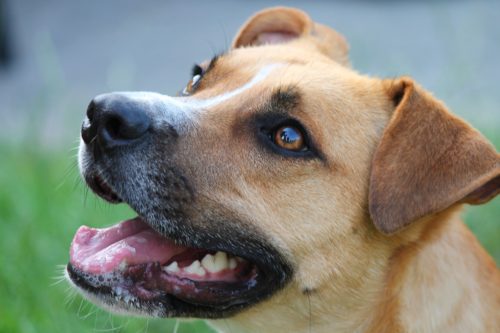If you suspect your dog may have contracted a yeast infection, it is vital that you determine the root cause of the yeast infection in order to select the proper treatment option. As a pet owner, you may not know what a yeast infection is, the symptoms of a yeast infection, or the potential causes.
This helpful guide will walk you through the signs, symptoms, causes, and treatment options for yeast infection in dogs.
Yeast Infections in Dogs: An Overview
Yeast infections are a rather common condition among dogs, but not many pet owners know what a yeast infection is until their pet contracts one. Yeast forms in a variety of different strains, but no matter which strain of yeast is developed, it is considered a fungus.

Yeast typically exists on the body of both humans and canines without causing any type of illness to develop. In fact, both humans and dogs are hosts to millions of bacteria and fungi. However, these are typically not harmful as they are handled by the immune system. Issues arise when there is an overabundance of fungus on the body. Dogs with any sort of immune deficiency are particularly prone to these infections and may even develop chronic yeast infections.The most common strain of yeast to cause yeast infections (also known as yeast dermatitis) in dogs is Malassezia Pachydermatis, which is a type of opportunistic pathogen.
Yeast infections can take a variety of forms in dogs, but most commonly yeast infections present themselves on the surface of the dog’s skin, paws, and in the form of canine ear infections. Dogs will typically develop irritated skin that will itch and release an odor.
Symptoms of Yeast Infection in Dogs
If your dog develops a yeast infection, it is important to understand common symptoms so that you can seek veterinary care and receive a diagnosis and subsequent treatment. Below are a handful of the most common symptoms of yeast infection in dogs.
- Odor: As mentioned above, when your dog contracts a yeast infection, it is common for an odor to develop regardless of the location of the infection. This smell will be distinct and different than the normal scent emitted by your dog and is often noticeable, particularly as the infection progresses.
- Itching and Scratching: A yeast infection often causes a dog to itch and scratch at his skin of the affected area in order to attempt to rid himself of his discomfort.
- Licking: Many dogs attempt to quell itchiness by licking the affected area in an attempt to clean off what is bothering him. If your dog begins to incessantly lick, it may be a sign of a yeast infection.
- Greasy Skin: Yeast infections sometimes present themselves as an overabundance of oil on the surface of the skin, which results in a greasy appearance.
- Dry, Flaky Skin: Yeast infections can also cause skin to appear scaly, dry, and flaky.
- Hair Loss: The itchiness and inflammation that often occurs when a dog has a yeast infection can sometimes progress to hair loss in dogs.
- Swelling and Redness: If your dog develops a yeast infection, the affected area may swell, be painful, and be warm to the touch. It may also develop a reddish hue due to the inflammation and swelling.
- Head Shaking: Ears are one of the most common areas in which yeast infections develop, and frequently dogs that have a yeast infection in their ears will shake their head in an attempt to rid themselves of their discomfort.
Causes of Canine Yeast Infection

To determine the right treatment path for your dog, it is important to correctly diagnose the underlying cause of the yeast infection. Canine yeast infections can arise from a variety of factors including:
- Debris in the ear canal
- Tumor or polyp (within ear drum)
- Allergies
- Bacterial infections
One of the most common causes of yeast infections in dogs is trapped water or debris in the ear canal. This is especially common in dogs that spend large amounts of time in the water, whether it be during swimming or bathing. The moist environment of the ear gives yeast a favorable environment in which to grow, leading to a yeast infection.
In addition, dogs suffering from allergies are more prone to develop canine yeast infections. Common allergens include pollens, mold, and dust. Food allergies can also contribute to the development of a fungal infection. Yeast infections may also develop as a result of an underlying condition, such as a bacterial infection, tumor or polyp, or a ruptured eardrum. In order to correctly diagnose the underlying cause of your dog’s yeast infection, it is important to consult with a licensed veterinarian.
Treatment of Yeast Infections in Dogs
Treatment for these fungal infections takes one of two forms: topical treatment or oral treatment.
Typical treatment for a skin yeast infection in dogs is treating your pup with anti-fungal shampoo. This usually requires bathing your dog with the shampoo every few days for several weeks in order to eliminate the yeast overgrowth. If your dog suffers from chronic yeast infections or chronic ear infections caused by the fungus, an oral anti-fungal may be required.




